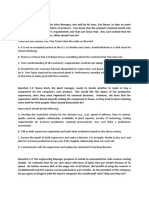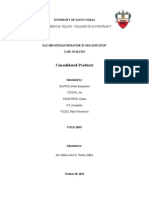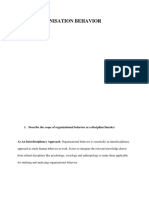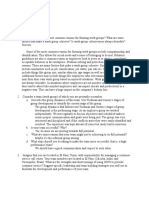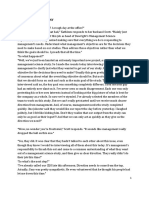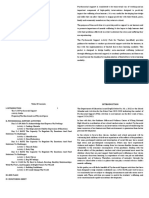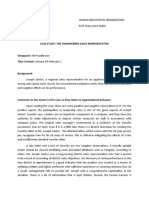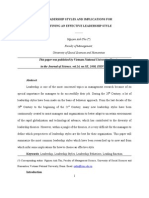0% found this document useful (0 votes)
28 views8 pagesMidterm Study Guide
The plant manager noticed too much waste in production. She formed a task force with two supervisors to address it. The task force met for three months and regularly published updates on their work to reduce waste.
Uploaded by
tink.tinyCopyright
© © All Rights Reserved
We take content rights seriously. If you suspect this is your content, claim it here.
Available Formats
Download as DOCX, PDF, TXT or read online on Scribd
0% found this document useful (0 votes)
28 views8 pagesMidterm Study Guide
The plant manager noticed too much waste in production. She formed a task force with two supervisors to address it. The task force met for three months and regularly published updates on their work to reduce waste.
Uploaded by
tink.tinyCopyright
© © All Rights Reserved
We take content rights seriously. If you suspect this is your content, claim it here.
Available Formats
Download as DOCX, PDF, TXT or read online on Scribd
/ 8
















